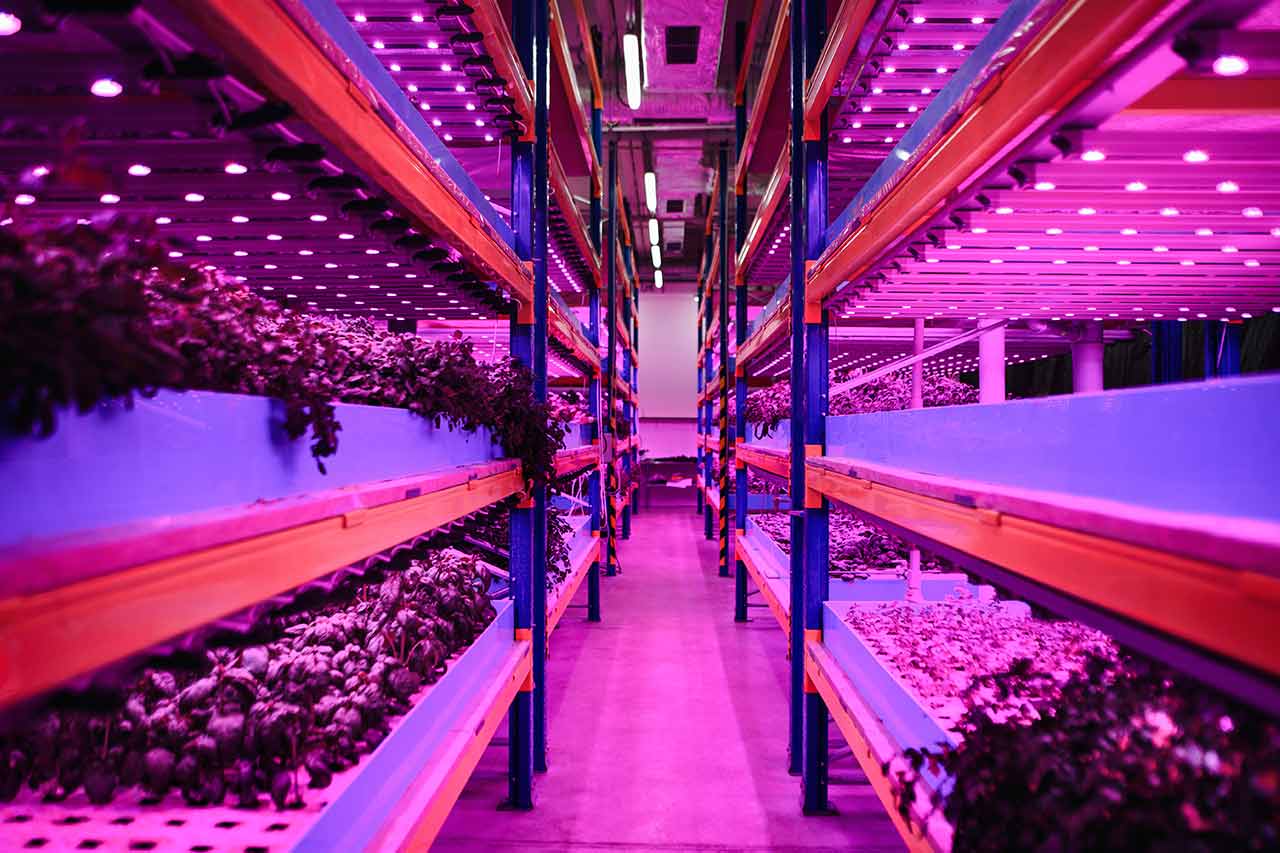Going beyond leafy greens: 5 niche vertical farming markets to explore

Vertical farming holds huge promises for a sustainable future. Compared to traditional outdoor farming, vertical farms have lower land use requirement, less CO2 emissions from transportation if grown nearer to consumption, are up to 90% more water efficient, and enable year-long production independent of outdoor climate. Notable investors such as Jeff Bezos of Amazon and SoftBank Group have invested substantially in the vertical farming space, yet only about 27% of indoor vertical farms were profitable. To stand out in an emerging but competitive market, new entrants and existing players may benefit from exploring niche markets beyond leafy green vegetables. In this article, we look at 5 less explored vertical farming opportunities.
1. Low Potassium Greens for Kidney Patients
For patients with kidney disease, excretion of potassium from the bloodstream can become impaired. Therefore, fresh fruits and vegetables that are high in potassium have to be avoided. Identifying an unmet need, Fujitsu developed low potassium “Kirei Yasai” (clean vegetables) which are grown in vertical farms repurposed from semiconductor cleanrooms. Low potassium fruits and vegetables are initially grown with full nutrient to avoid stunting, then switched to potassium deficient nutrient solution for maturation. Currently, only lettuce and spinach are commercially available—melon, strawberry, and tomatoes are in the pipeline. Having more low potassium options would allow kidney patients to supplement their meals with fresh greens and enjoy a healthy balanced diet.
2. Biofortified Vegetables
Just as the mineral content of vegetables can be restricted, it can be fortified as well. Mineral biofortified vegetables have been investigated and found to be feasible, although there is currently no known commercial operation. Calcium deficiency is a major issue in East Asia, resulting in high incidence of osteoporosis and fractures. However, lactose intolerance is relatively common in Asian populations, hence a plant-based source of calcium would be preferred. Mizuna (Japanese mustard greens) was found to be especially efficient in accumulating calcium when grown in hydroponic system. There is a potential for local vertical farms to become suppliers of fresh biofortified superfood.
3. Portable Modular Farms
One benefit of vertical farming is that they can be grown close to urban centers right where consumer demand is the highest. This shortening of the supply chain can result in fresher and more nutritious products, while cutting down greenhouse gas emission from transportation. The Germany-based startup, infarm, is taking the challenge of shortening the supply chain to the extreme by building compact and modular vertical farming units. By partnering with local supermarkets and restaurants, vegetables are grown and displayed right where they would be purchased or eaten by consumers.
4. Biologics
US-based biopharmaceutical company, iBio, is using plants to produce biologics. Compared to the traditional approaches of using yeast or mammalian cell culture systems, plant-based biologic production is easier to scale, generates less plastic waste from laboratory consumables, and lowers the risk of mammalian virus contamination. Recently, iBio announced a collaboration with a China-based biopharma company to produce a vaccine for the ongoing coronavirus (COVID-19) outbreak. Antigens for the COVID-19 vaccine will be transfected into transgenic tobacco plants that are grown vertically in highly controlled indoor farms.
5. Fresh Cut Flowers
Why are fresh cut flowers so expensive? One reason would be the complicated supply chain needed to transport the delicate flowers across continents. Growing flowers in hydroponic systems is not unheard of. The Kenyan flower farm, Wildfire Flowers, transitioned their rose production from soil to hydroponics. In open field farming, pesticides are heavily used to protect flowers from being damaged by bugs, hence the controlled and protected environment of hydroponic systems is an advantage. A plausible next step could be to shift rose production to vertical farms in urban areas where most of the consumer demands are located.
What can these vertical farms grow during off-peak seasons? Edible flower is an emerging culinary trend. Flowers are a source of nutritional and bioactive components, and can be used to add colors to salad for instance.
Vertical farming is a promising technology for a sustainable future, and it has attracted a lot of interest and investment. However, high cost and lack of profitability is a daunting barrier to both new and existing players. A potential strategy to stand out from the crowd is to explore niche vertical farming markets where cost control pressures are alleviated. For that, explorers at Alcimed are ready to support you on your vertical farming journey.
About the authors
Warren, Consultant in Alcimed’s Life Sciences team in Asia-Pacific
Bettina, Business Director in Alcimed’s Life Sciences team in Asia-Pacific
Do you have an exploration project?
Our explorers are ready to discuss it with you